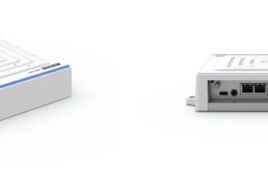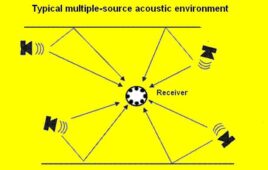Medical device designs are evolving rapidly and demand higher standards to prevent medical liability issues. When designing with linear motion components, it is important to collaborate early for best results. The specifications for some medical applications may exceed the capabilities of standard, cataloged products. If known early in the design process, collaboration can reduce such problems later.
Needed capabilities or features to discuss during initial collaborative meetings include, “the customer’s performance specifications for the product’s expected life, environmental conditions, material selection, and physical size,” noted Christopher Nook, CEO, Nook Industries. “Then incorporate enhancements to the design to address the rigors of most medical applications.” In many cases, you may find that a modified version of a standard motion component will suit the requirement.

Medical applications often need custom ball screws not available in a catalog. Therefore, it is important to discuss application needs early in the design process.
The engineers at Nook use the following process to design medical devices. Once you have the specifications from the medical device manufacturer,determine the design priorities for:
• Performance: load capacity and length/range of travel requirements
• Efficiency: high-precision/low-precision
• Accuracy: lead accuracy measured in microns
• Envelope: size and compactness
• Material constraints: stainless steel, magnetism/non-magnetism, radioactive elements, and so on.
• Operating environment: non-direct exposure with patients or attached to the human body, and so on.
Conduct design reviews at various stages. The reviews should involve comprehensive, systematic, and documented examinations that will evaluate the adequacy of the requirements and whether the design meets them.
A ball screw design, for example, is not practical if it cannot be consistently and efficiently produced. Software like SolidWorks® COSMOS makes available a full range of integrated modeling and simulation functions to ensure a design is producible.
Trends in medical devices
Nook engineers have noted the following changes in linear component requirements:
Less load with higher precision. With a shift to physically smaller medical devices, load capacity requirements are shrinking but precision requirements are still high. The Small Diameter Ball Screw Assembly (SD Ball Screw) is an example of a linear component that meets these needs. This metric-based product line offers diameter ranges from 6 to 12 mm. Load capacity is 40 to 100 lb, with a lead accuracy in microns.

This stainless steel modular linear actuator meets the newer requirements for high duty cycles and clean-room environments.
Extreme duty or hygienic requirements. More applications require products that suit high duty cycles and clean-room type requirements. The Stainless Steel Modular Linear Actuator Series (QLZE / QSZE / QST-KE) Positioning System is an example of a linear device that meets such cycle requirements, as well as the sterile needs of pharmaceutical, medical, and clean room applications. A stainless steel cover band wraps over the square aluminum profiles. It helps protect the actuator when it is exposed to caustic cleaning solutions. The cover replaces a more typical bellows cover, eliminating that particular wear issue as well.
These actuators suit push-pull type directional loads of up to 1,600 lbs of force; maximum thrust loads to 1,100 lbs of force. Modified carriages configured with additional rollers or bearings will handle higher load capacities.

A miniature rolled screw also requires micro sizes for the nut and the rest of the assembly, which Nook achieved through a new design in the ball return.
Micro-sizes. The medical technology and optics industries increasingly demand smaller ball screws. But miniaturization goes beyond materials and tools, which has motivated manufacturers to tackle and solve production problems associated with the micro diameters of rolling ball screws. A rolled screw with 4 mm diameter by 1 mm lead also requires micro sizes for the nut and for the rest of the assembly. Now, instead of an outer diameter of 10 mm of the cylindrical nut, previously standard on the market, there are versions that are just 8 mm. Nook achieved these sizes by implementing a new ball return and assembly. The development offers an affordable option for “normal” applications as well as a replacement for ground versions.
The 4 x 1 type ball screws are used in removing tissue for laboratory tests, such as biopsies, and in optical devices, among others. Versions of these ball screws, including the alloy and stainless steel Carry™ high-helix line, move with rolling friction. Standard diameters range from 6 to 63 mm, with leads from 1 to 50 mm.
The Speedy™ metric screws move light loads at high travel rates and have lead-to-diameter ratios of up to 6:1— enabling efficient conversion of linear to rotary movements (sliding friction). They are available with durable wear resistant plastic nuts. For higher loads, bronze nuts are available. Special plastic materials can be ordered for demanding applications. Standard diameters range from 5 to 65 mm; leads from 3 to 200 mm.
Nook Industries
www.nookindustries.com
Filed Under: Ballscrews • leadscrews, Medical-device manufacture, LINEAR MOTION, MECHANICAL POWER TRANSMISSION





Tell Us What You Think!